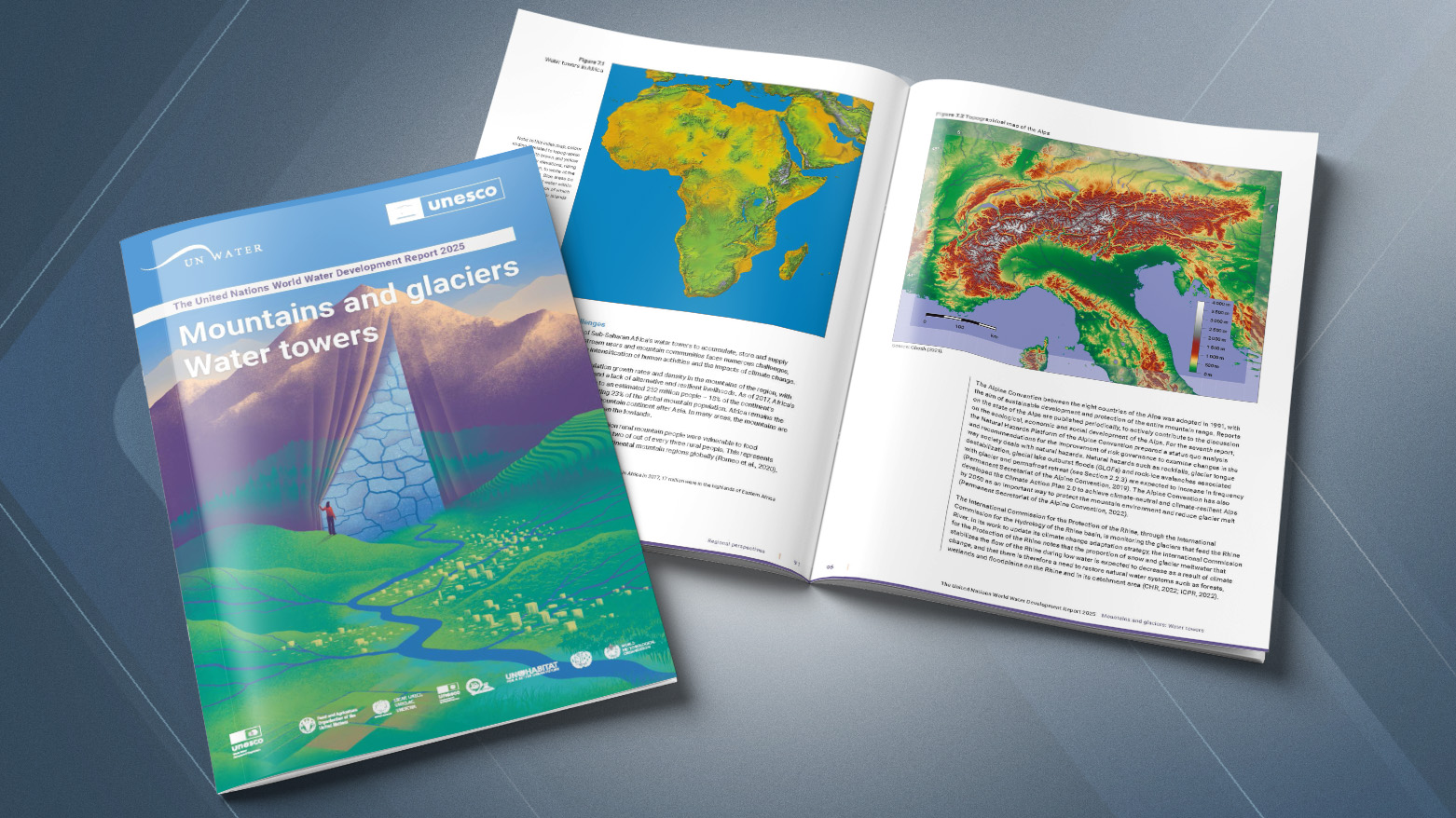UNESCO Sounds Alarm Over Melting Glaciers
From the Andes to the Hindu Kush Himalaya, UNESCO warns that many of the planet’s glaciers are melting at unprecedented rates, placing already fragile mountain ecosystems and downstream communities at increasing risk.

ERBIL (Kurdistan 24) — In its latest annual publication, the United Nations World Water Development Report 2025, UNESCO raises alarm over the accelerating retreat of glaciers and the dire implications for global water security, biodiversity, and sustainable development. Titled Mountains and Glaciers: Water Towers, the report spotlights the critical role that mountain regions and alpine glaciers play in sustaining billions of lives across the world.
The 2025 report is especially timely, coinciding with the UN General Assembly's declaration of 2025 as the International Year of Glaciers' Preservation and the launch of the Decade of Action for Cryospheric Sciences.
From the Andes to the Hindu Kush Himalaya, UNESCO warns that many of the planet’s glaciers are melting at unprecedented rates, placing already fragile mountain ecosystems and downstream communities at increasing risk.
Glaciers, often referred to as the planet’s "water towers," provide up to 60% of the world's fresh water. Yet climate change, unsustainable land use, air pollution, and black carbon deposition are accelerating their disappearance.
The report notes that Africa's iconic glaciers on Mount Kenya, Kilimanjaro, and the Rwenzori Mountains may vanish entirely by 2040, while the Hindu Kush-Himalaya region could lose up to 50% of its glacier volume by the end of the century.
"We are at a crucial juncture for the protection of our world's water systems," said Audrey Azoulay, Director-General of UNESCO, in the report’s foreword. "Mountains and glaciers are not isolated ecosystems; what happens in the highlands affects all of us downstream."
The report provides a sobering account of how the rapid changes in the mountain cryosphere are impacting water availability, food security, disaster risks, and ecosystem stability. More than 1.1 billion people live in mountain regions, and an additional 2 billion depend on water from mountains for agriculture, hydropower, and sanitation.
In its comprehensive assessment, the report highlights the intensifying water stress across regions: 25 countries, hosting a quarter of the global population, now face "extremely high" water stress.
Approximately 4 billion people experience severe water scarcity for at least one month each year. In this context, melting glaciers add another layer of complexity to an already escalating global water crisis.
UNESCO also sounds the alarm on the world’s lagging progress toward achieving Sustainable Development Goal 6 (SDG 6), which aims to ensure access to water and sanitation for all by 2030. As of 2022, 2.2 billion people lacked safely managed drinking water, and 3.5 billion lacked access to safely managed sanitation.
The report urges a multifaceted and inclusive response, combining science, Indigenous knowledge, and sustainable governance. It calls for urgent investment in transboundary water cooperation, infrastructure adaptation, and early warning systems, particularly in mountain regions increasingly prone to glacier lake outburst floods (GLOFs), landslides, and erosion.
Michela Miletto and Richard Connor, editors of the report, underscore the importance of mountain communities as stewards of knowledge and biodiversity, advocating for their inclusion in policy and climate adaptation strategies. The report also calls attention to the role of hydropower, agriculture, and tourism in both driving environmental change and providing potential for sustainable solutions.
From the Atlas Mountains to the Andes, and from the Alps to the Himalayas, the message is clear: if we fail to protect the world’s water towers, the consequences will ripple far beyond the peaks. As UNESCO emphasizes, "nothing that happens in mountains stays in mountains. In one way or another, we all live downstream."
The full report is available through the UNESCO Open Access Repository and includes extensive regional assessments, data visualizations, and policy recommendations to drive global water resilience in a warming world.
